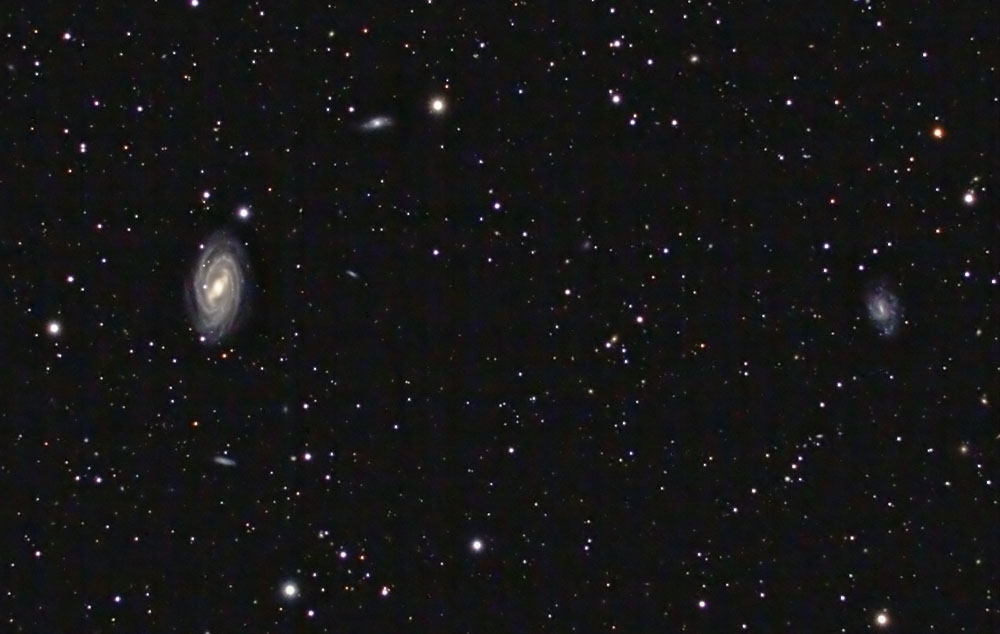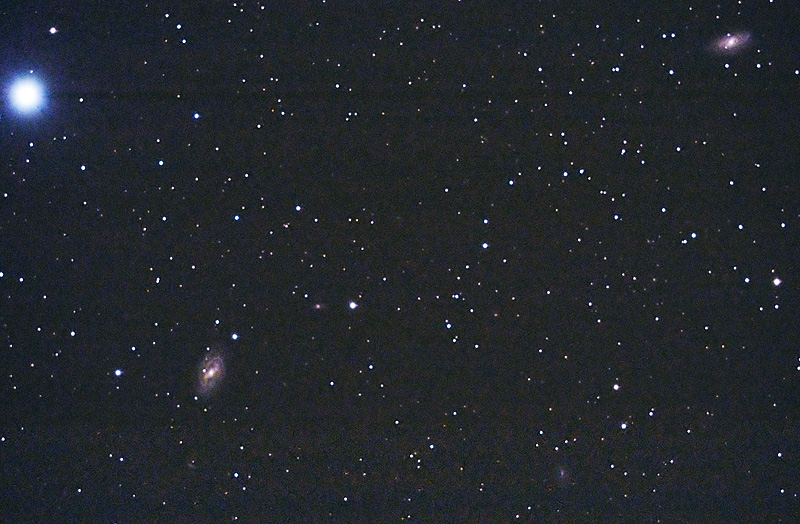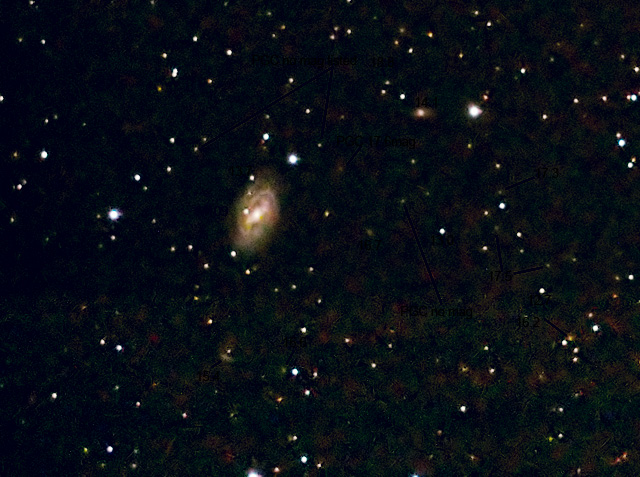All images & text on this web page Copyright © 1998-2007, Dick Locke. All Rights Reserved. Contact and Image Use Information

M109, New Version

Above: in 2007 I was able to get some decent time on spiral galaxy M109 with my DSLR. M109 is listed at mag 9.8. The best designation I have on the 12.4 magnitude galaxy on the right is UGC 6983. PGC 37553 at 14.1 mag is the galaxy above and to the right.
20 exposures, 4 minutes each = 80 minutes total exposure, February 2007. Canon EOS 20Da (unmodified), ISO 1600, Takahashi TOA 130 (a 5" APO refractor) with reducer, Losmandy G-11 mount. My current image processing workflow is here.
Other Pictures from this trip are here.
My Messier Pictures

This image was a lot of fun to process due to the many dim galaxies I was able to find in the picture. M109 is the "barred" spiral galaxy on the lower left listed as magnitude 9.8. (the higher the number the dimmer). The galaxy on the upper right is NGC 3953, also listed at mag 9.8. The blue star on the left is Phecda, mag 2.41, listed as 64-Gamma Ursae Majoris. M109 is about 55 million light years from earth. Got decent focus and tracking... The cool night helped keep the noise under control.
If you look carefully you may see a number of other faint fuzzies. I took the time to hunt these down in The Sky version 6. See below. Someday I may do a better job combining these images to remove the overlap artifacts...
Imaged at prime focus with Nikon D100 DSLR camera, 3 images exposed for 3 minutes, ISO 1250, Takahashi TOA 130 with reducer (f5.8, 754mm), guided using STV and ST80. This is cropped a bit from the full frame. Images stacked in Registar, with usual processing in Photoshop CS. Captured 4/1/2005 from NHAC Neal Site. The image is a bit rough due to some crude combining of the 3 images...

(Some of the reddish blotches on the bottom are noise. That's where the images I took didn't overlap. Kind of shows you the advantage of stacking multiple images together to reduce noise!)

 The Sky 6 screen shot of photographic area with Galaxy brightness labels |  Same as on left, but with stellar magnitudes |
 Megastar screenshot, featuring an image overlay from RealSky, with galaxy designations |  Same as on the left, but with galaxy magnitudes |
Do give you an idea how dim this stuff is (Astronomy geeks, please feel free to help me out with the magnitudes of you'd like):
Magnitude 1 stars: first stars you see at night, the brightest
Mag 4: maybe you can see it from The Woodlands naked-eye
Mag 7: the dimmest stars that could possibly be viewed naked-eye given the absolute best conditions (top of a mountain, cold clear still night).
Mag 10: can see 'em in a telescope of you look carefully.
Mag 13: starting to get too dim to see in most telescopes
Mag 15: probably not visible in most small-mid size telescopes to the eye - visible on some long exposure photographs
Mag 16-18: some of the dim galaxies in this picture
Mag 20: Paul Downing's estimate of how deep he can get photographically with his 14" SCT telescope...
See Paul's M109, and his really dim ARPs.
Dick Locke's Astronomy Image Index
Dick Locke's Other Galaxy Photos - Astrophotography
Copyright Dick Locke. All Rights Reserved.
Contact and Image Use Information